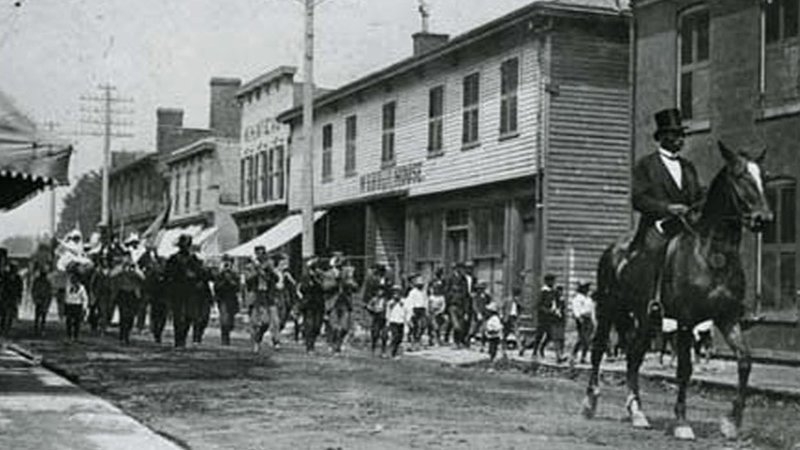
Government of Canada recognizes Black History with four new designations
On the eve of Emancipation Day, Aug. 1st, the Government of Canada has just made a major announcement with the declaration of four new Black History historic designations. The following is the official release from Parks Canada:
“Canada’s national historic persons, places, and events need to reflect the rich and varied heritage of our country. National historic designations encourage us to acknowledge the struggles and conflict that have led us to the Canada of today, and help us reflect on how to build a more inclusive society for today and future generations.
For the past 400 years, Black Canadians have faced – and continue to face – prejudice, inequalities, and systemic barriers to full and equal participation in society, dating back to the enslavement of African people in Canada. In many parts of the Commonwealth, the first day of August commemorates the abolishment of the Slavery by the British Empire in 1834, this day is also known as “Emancipation Day”. Since then, our society has made strides to combat issues that Black Canadians face but more is needed to create an equitable country for all.
Parks Canada is committed to ensuring that Canadians have opportunities to learn about the full scope of our history, including the tragic and shameful periods that are part of our collective past. Commemoration is about recognizing the many diverse aspects of our history and committing to do better in the future.
Today, the Minister of Environment and Climate Change and Minister responsible for Parks Canada, Jonathan Wilkinson, announced four new designations under the National Program of Historical Commemoration. The new designations recognize the national historic significance of two persons: Richard Pierpoint and Larry Gains and two events: The Enslavement of African People in Canada and the West Indian Domestic Scheme as they relate to Black history in Canada.
These new designations help to shed light on the collective and personal experiences of Black Canadians and their struggles for freedom, equality and justice. The new designations include:
The Enslavement of African People in Canada (c. 1629–1834): Between c. 1629 and 1834, there were more than 4,000 enslaved people of African descent in the British and French colonies that later became Quebec, Ontario, Nova Scotia, Prince Edward Island, and New Brunswick. Children, women, and men were reduced to property that could be bought and sold, exploited for their labour, and subjected to physical, sexual, psychological, and reproductive violence.Britain outlawed participation in the Atlantic slave trade throughout its Empire in 1807. However, it wasn’t until the passage of the Slavery Abolition Act in 1833 that the British parliament prohibited enslavement, effective August 1, 1834. In the years that followed, all people of African descent in Canada were legally free, but they were not equal: they have faced systemic racism, racial segregation, prejudice, and inequality in Canadian society, the roots of which can be traced back, at least in part, to the many, complex legacies of enslavement.
Black Loyalist Richard Pierpoint (c. 1744–1838): Richard Pierpoint, born in the Kingdom of Bundu, a region located in present-day Senegal, was captured, forcibly transported across the Atlantic to the Americas and then sold into slavery as a teenager. After 20 years of enslavement in the British Thirteen Colonies, he regained his freedom by fighting for the British during the American Revolution and settled in Upper Canada by 1791. During the war of 1812, he was involved in the creation of “the Colored Corps”, composed of men of African descent who helped protect Upper Canada by taking part in the fighting and repairing fortifications in the Niagara region. He unsuccessfully petitioned the Lieutenant Governor in 1821 for passage back to Africa, and died in 1838 on his farm in the Township of Garafraxa. In recent years, the life of Richard Pierpoint has been recognized as one of the more well-known examples of the early contributions and hardships of Black Loyalists.
Heavyweight Boxer Larry Gains (1900-1983): Born on December 12, 1900 in Toronto, Ontario, Lawrence Samuel “Larry” Gains was one of the most talented boxers in the first half of the 20th century. Despite racial discrimination he gained prominence in the 1920s and 1930s by winning the Canadian, British Empire, and World Colored Heavyweight Titles. It was difficult for Gains to find top-level fights in North America, where racial discrimination limited his opportunities. Moving overseas was a common strategy for Black fighters at the time who hoped that, in Europe, they would have their athletic achievements assessed on an equal basis with their white opponents. Gains left Canada in 1923 to pursue his professional boxing career in Great Britain and Europe. In February 1927, he won his first professional title when he became the Canadian Heavyweight Champion. A year later, he won the World Colored Heavyweight title and in 1932 became the British Empire Heavyweight Champion. His career was limited due to racial discrimination, as non-white athletes were barred from competing for the English Heavyweight Title and promoters maintained an unofficial colour barrier for the World Heavyweight Title, both championships for which he was a legitimate contender.
West Indian Domestic Scheme, 1955-1967: The West Indian Domestic Scheme, launched in 1955, was a targeted immigration program that permitted approximately 3,000 women from the Caribbean to come to Canada to work as domestic servants as a path to eventual citizenship. This program offered a very limited route for Caribbean immigration to Canada at a time when discriminatory government policies restricted non-white immigrants from settling in Canada. While the program was discontinued in 1968, some of the women who participated went on to make significant contributions to Canadian history and helped to build vibrant Caribbean communities in Montréal and Toronto. One of the best known participants in the West Indian Domestic Scheme is the Honourable Jean Augustine, who migrated to Canada from Grenada in 1960 before going on to become the first Black Canadian woman elected to the House of Commons in 1993 and eventually appointed to a Cabinet post in 2002. As Parliamentarian, Jean introduced a motion to declare February as Black History Month, which ultimately passed and is widely celebrated to this day.
The Government of Canada, through the Historic Sites and Monuments Board of Canada, recognizes significant persons, places, and events that have shaped our country as one way of helping Canadians connect with their past. By sharing these stories with Canadians, we hope to foster understanding and reflection on the histories, cultures, legacies, and realities of Canada’s past and present.”
Source: Government of Canada










